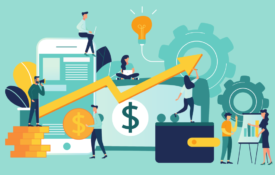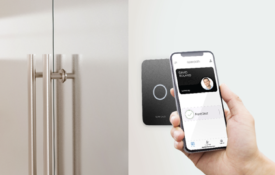During my tenure at Lululemon, we repurposed fabric remnants discarded during manufacturing to create a series of headbands. Unfortunately, many companies resist spending even minimal amounts to eliminate waste and reduce costs, despite the long-term benefits for their businesses and customers. This resistance persists despite the potential to address waste that leads to billions of dollars in unnecessary expenses each year.
The concept of “viewing everything as a resource for something else” and the notion of “zero waste” production was first introduced to me when Raegan Kelly, head of sustainability and a fellow founding member of Better for All, gave me the book Cradle to Cradle: Remaking the Way We Make Things by William McDonough and Michael Braungart.
This book profoundly influenced my understanding of sustainable production. McDonough and Braungart advocate for viewing everything as a resource for something else, thereby eliminating waste. By designing products with biodegradable or perpetually recyclable materials from the outset, we can potentially eliminate waste altogether. The book explains that, in nature, nothing goes to waste; what one system discards, another uses as sustenance. Everything can be engineered to either break down and nourish the soil as biological nutrients or be repurposed into high-quality materials—known as technical nutrients—for new products, without causing pollution.

UNVEILING THE MYTH OF RECYCLABILITY
For years, consumers have been sold the idea that recycling is the solution to plastic waste. However, the reality is that only a small fraction of plastics are actually recycled. The majority end up in landfills or, worse, in our oceans. According to an Environmental Protection Agency (EPA) report, more than 35 million tons of plastics were generated in the United States in 2018 and only 8.7% was recycled. This has led to an understandable skepticism among consumers about the efficacy of recycling programs.
The push for zero waste aligns with the principles McDonough and Braungart outlined, emphasizing the need to rethink waste from the design stage. By adopting materials like PHBH and similar fully compostable materials, companies have the option to create products that are designed to disappear after use, reducing the burden on consumers and municipalities alike. The onus is shifting from consumers sorting waste to companies designing it out of existence.
WHAT IS “TRUE COMPOSABILITY” AND WHY DOES IT MATTER?
The EPA admits that “some types of plastics are not accepted in community recycling programs.” This means that even if a consumer does everything right after using an item, they might still not be able to find an opportunity for their used single-use container or package to be recycled. In response to these concerns, compostable plastics have emerged as a viable alternative. PHA is a bioplastic made through fermentation of renewable resources such as plant oils and sugars. PHA is unique among bioplastics for its biodegradability in the environment and in a wide range of composting conditions. PHA also features an array of molecular structures that includes PHB and PHBH. Unlike traditional plastics, when PHA biodegrades it does so without leaving harmful residues. This presents a significant advantage over “biodegradable” plastics, which often require specific conditions to break down and may still leave microplastics in the environment.
Being open to compostable options such as PHA, PHB, and PHBH can help companies reduce waste-management costs and appeal to a growing base of eco-conscious consumers. For instance, during my time at Lululemon, we saw the benefits of repurposing manufacturing waste into new products. However, many companies still resist even minimal investments to eliminate waste, despite the long-term benefits. I am passionate about projects that make sustainability central to their business missions, like Notpla, Incredible Eats, and Patagonia’s Worn Wear. Business leaders at these brands see the power of embracing alternative materials and processes to create products and packaging. Seeing the value in investing in our world and doing everything they can to minimize their carbon footprint is what will prove these businesses have what it takes to rise above the rest.

LEARNING FROM GLOBAL LEADERS
The potential for widespread PHA adoption is not coming soon; it’s already here. Several cost-conscious companies around the globe are already successfully implementing PHA bioplastics into their products. Kaneka, a Japanese company, has developed a line of PHBH-based products that ranges from packaging materials to disposable utensils and cups.
7-Eleven stores in Japan adopted PHBH cutlery and packaging back in 2019, leading the charge in reducing single-use plastic waste in the food service industry. Since then, McDonald’s largest independent franchisee, Arcos Dorados Holdings, has begun rolling out food packaging with a 100% biodegradable barrier compound made with Janus technology by J&J Green Paper.
The Association of Independent Festivals (AIV), based in the UK, took heeded the call from customers, festival lovers, and music fans, removing the use of plastic straws on-site in 2018 as a minimum first step, and since then banning single-use plastic at its events.
The growing interest in bioplastics abroad represents a significant opportunity for U.S. companies. While the U.S. has been slower to embrace these alternatives, the pressure from environmentally conscious consumers is mounting. The lesson for C-suite executives is clear: The time to act is now.
Richard Branson’s pioneering efforts with biofuels provide a relevant analogy. When he converted one of his planes to biofuel, the costs were exorbitant. Yet, his response was simple and powerful: “Someone has to be first.” This sentiment rings true as companies grapple with the challenge of reducing not just the waste they produce, but the waste their vendors, partners, and customers produce as a consequence. The technology and materials are already available; it is now a matter of leadership and commitment.
ZERO WASTE: THE ULTIMATE GOAL
Moving beyond merely reducing or recycling waste, the concept of zero waste emphasizes designing products with their end of life in mind. This means creating products that can be reused, repurposed, or returned to nature without causing harm. For instance, athletic shoes could be designed to become playground surfaces, and apparel could be repurposed as insulation for cars or homes.
The push for zero waste is not just an environmental imperative but also a strategic opportunity. Companies that lead the way in adopting zero-waste practices can position themselves as innovators and market leaders. This is particularly relevant in the context of emerging legislation aimed at curbing greenwashing and promoting genuine sustainability efforts.
A critical aspect of this transition is shifting the responsibility from consumers to companies. For decades, the burden of managing plastic waste has been placed on consumers, with the expectation that they will sort, recycle, and dispose of plastics properly. This approach has proven ineffective and has contributed to widespread environmental degradation. But the beauty of bioplastic and thoughtful approaches to waste management through compostables is that they don’t require a consumer to change their behavior, as compostables decompose organically with food waste. No more “shaming” a consumer for a decision they didn’t make.
It is time for companies to take responsibility for the entire life cycle of their products, from design to disposal. More businesses need to step up and begin adopting zero-waste principles as a genuine path to reducing environmental impact.
The solution to our plastics problem is not a futuristic dream; it is already being addressed by business leaders abroad. The U.S. needs to catch up. PHA, PHBH, and other bioplastics provide a viable, sustainable alternative to traditional plastics, and their adoption is gaining momentum globally.
As Gen Z continues to demand accountability and transparency, U.S. companies have a unique opportunity to lead the charge in addressing plastic waste. By embracing zero-waste practices and taking responsibility for their products’ entire life cycle, companies can meet consumer expectations, comply with emerging regulations, and position themselves as pioneers in the fight against plastic pollution. The time to act is now—because someone has to be first.
Bob Meers is a founding member of Better for All. He previously served as CEO of Lululemon Athletica, president and CEO of Syratech, and president and CEO of Reebok International.













































